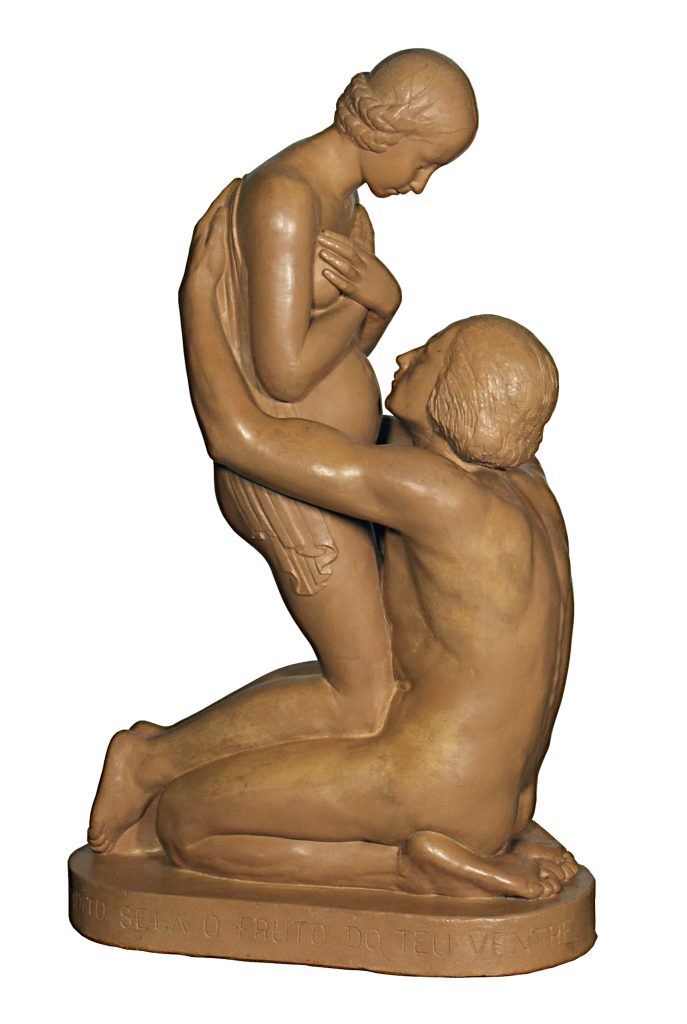Author: Ernesto Canto da Maya (1890-1981)
Date: 20th century (ca. 1920-22)
Material: painted terracotta
Dimensions: H. 97 x W. 59 x Base 29 cm
Reference: MCM5259
On display: Carlos Machado Museum
Notes: In 1907, Ernesto Canto da Maya (1890-1981) began a Sculpture degree at the Fine Arts School in Lisbon, attending Architecture College in 1911. From 1913 on, he attended the Fine Arts School in Paris, also working with the Symbolist sculptor James Vibert in Switzerland in 1914, and with the sculptor Júlio António in Madrid, in 1916. In 1917, a period disturbed by the I World War, in S. Miguel he carried out the bas-reliefs of the stage framework at Coliseu Micaelense, in Ponta Delgada, with a work devoted to Theater and Music, as well as the decorative frieze for a room at the Marquis Jácome Correia Palace, consecrated to the goddess Diana.
This artist developed an intimate aesthetics, where the simplicity of the silhouettes and the expressive restraint of the modelled were precursors of the “Art Deco” movement. The formal smoothness of Canto da Maya Sculpture emphasized the inwardness of the undertaken style, through which a series of magnificent sculptures of great individuality and beauty emerged.
From 1919 up until 1938, Canto da Maya enjoyed a period of French livingness, taking up residence at Boulogne-sur-Seine. This sojourn in France matches with a stage of splendor, during which Canto da Maya exhibited both in Portugal and abroad. In 1922 he presents at the Grand Palais, on the 15th Salon d’Automne in Paris, the group titled “Béni soit le Fruit de tes Entrailles”. This work was mentioned by some critics, namely Robert Rey, who wrote at the paper Le Crapouillot: “(…) Un homme à genoux ceinture de ses bras la taille d’une femme debout contre lui. Sa figure est grave, on y lit tout un monde de tendresse (…)”, revealing an exaltation of strong allure and feeling.
Under the same theme, other versions of this work were carried out, such as the one presented here, belonging to Carlos Machado Museum. On its base is registered: “Blessed be the Fruit of thy Body”, valuing, through the plain modelling of sublime profiles, the idea of union, in a state of purity. The connection between Canto da Maya individual path and his work integrates this sculpture in an initiation phase marked by an intense praise of Life [Margarida Teves de Oliveira].



